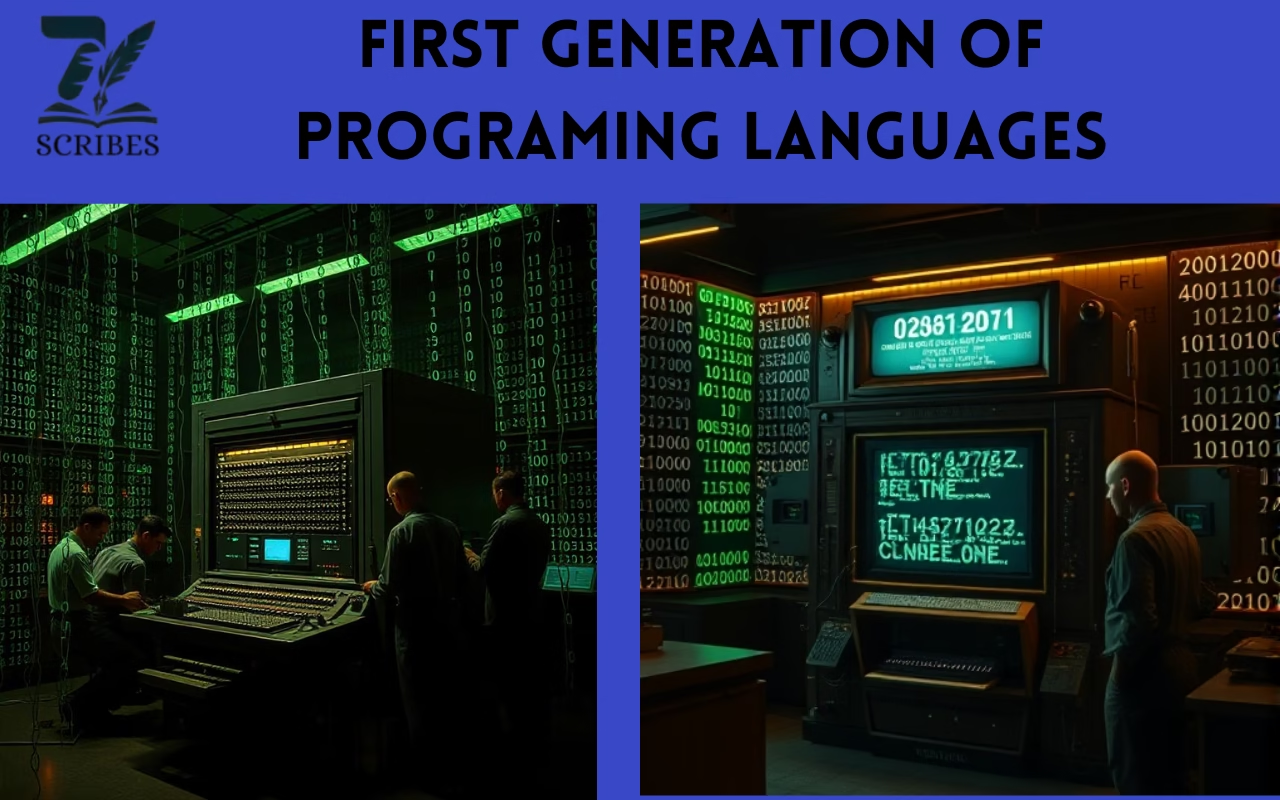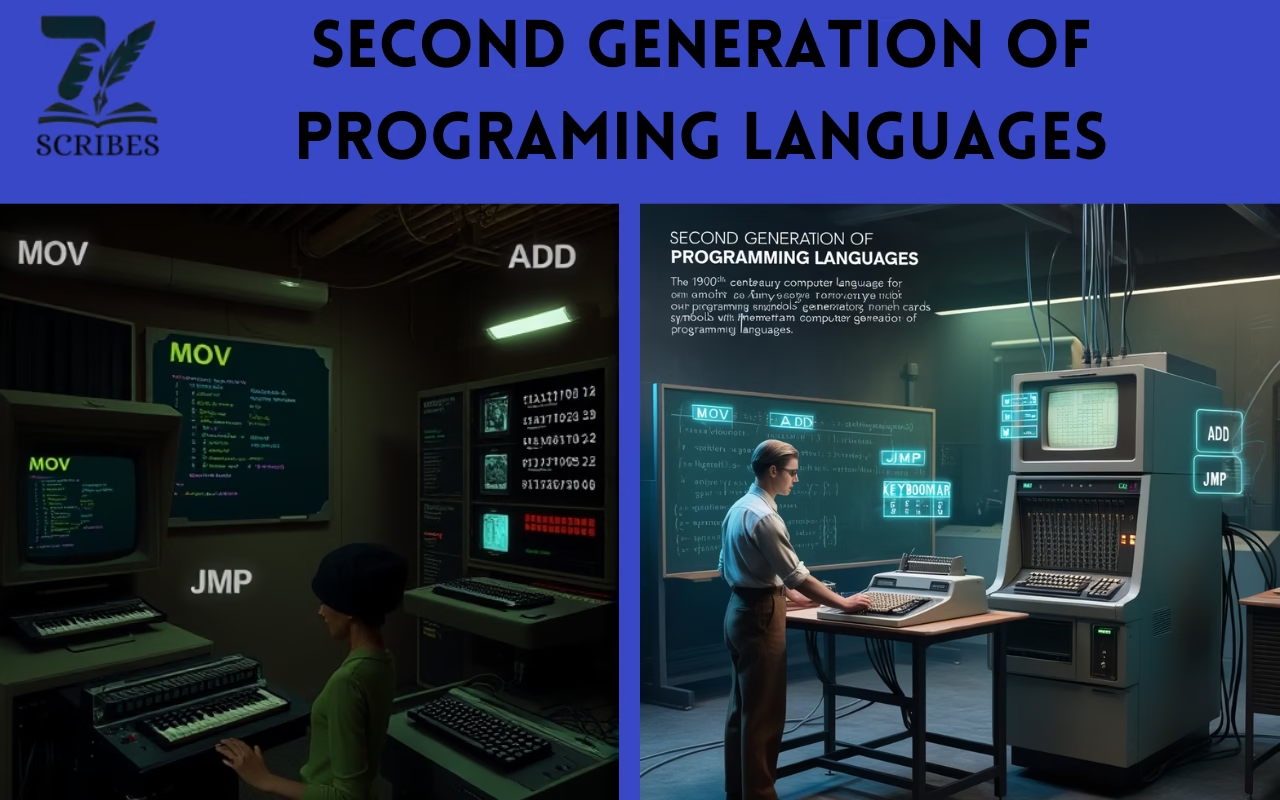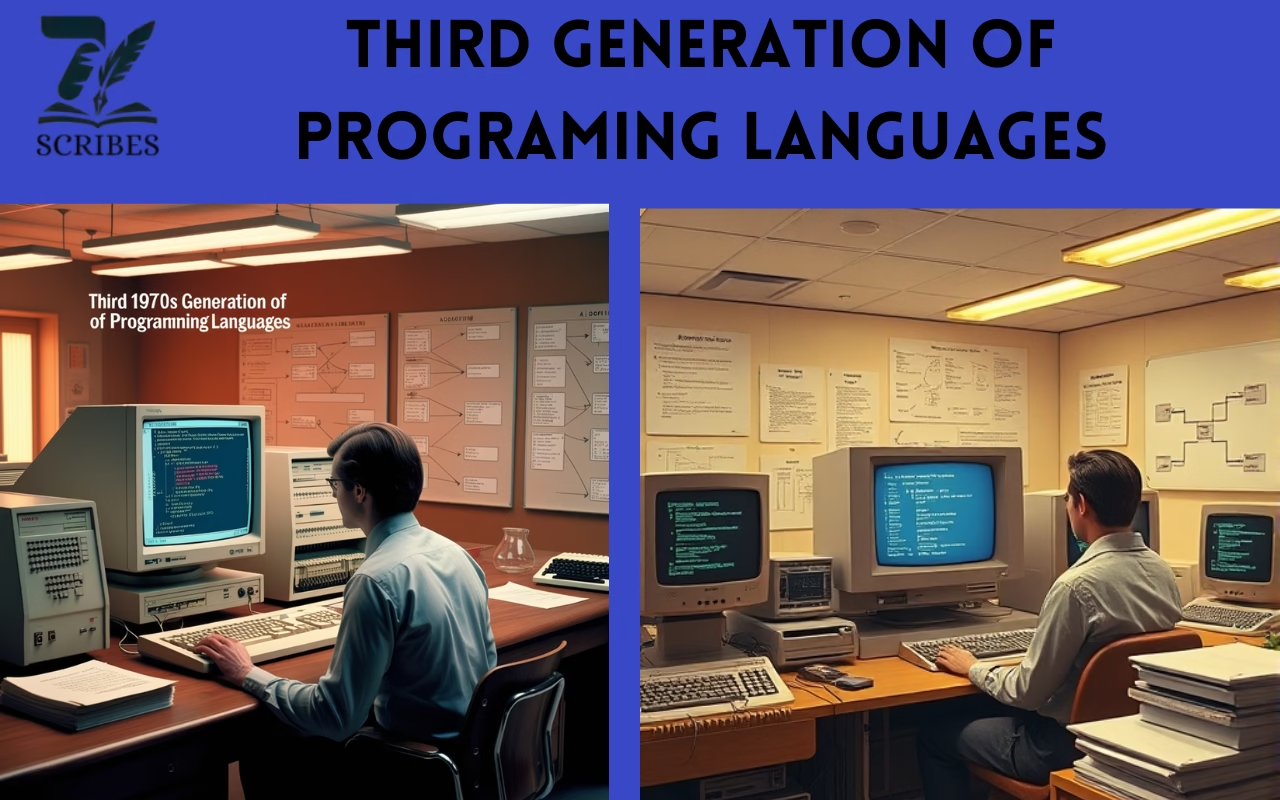What is programming or programming languages?
Program or programming is simply a set of instructions, or algorithms given to machines to execute or perform a particular task.
Programming-Languages-ThroughAges-origins-to-innovation
Programming languages are the media by which humans communicate with machines or computers. Computers can only understand binary language. So, in order to communicate with a computer, instructions should be written in binary language or converted into binary language from other languages using translators and assemblers.
Programming allows a human to convert their thoughts in the real world through different software and hardware. Human writes their thoughts in the form of programs and the machine exactly does what they developed for or what the developer wants.
Like other things, programming languages also evolve from generation to generation like first, second, and third generations, etc..
In this article, you will learn about the history of programming languages and the changes that happened with time.
History of Computer/Machine languages:
-
First Generation:

First-generation language was introduced in the 1940s.it is also called very low-level language, binary language, object code, machine language, or machine code. It is based on binary digits 0s and 1s. The programmer had to write code by hand and transfer it to the machine through a punch card, flipping switches push tape, etc.
High-level languages are used to program different software but to make device drivers, interfaces with firmware, and hardware used machine-level languages.
| Advantages | Disadvantages |
| It is closest to the machine | Difficult to program |
| It is fast and efficient | Required memorization codes and memory address. |
| It does not need any translater. | Difficult in error finding and debudding. |
Ans No:03: First Programme:
The first ever program is “print hello”.
Ans no:01: August Ada Lovelace was the first programmer. She makes the first program for Charles Babbage’s Analytical Engine in the 1800s.
Ans No:01: The first programming language was machine language.
-
Second Generation:

The second-generation language was introduced in the 1950’s. It is also called assembly language or low-level language.
The programs are written in the form of alphanumeric symbols also refer as Mnemonic Codes instead of using binary codes 0s and 1s. the programs written in second-generation languages covered machine language using assembler.
It is used in kernel systems and driver design.
| Advantages | Drawback |
| Programmer-friendly as compared to machine language. | Machine-dependent means assembler required to translate. |
| It is easy to locate or error-checked. | It required understanding at the machine level |
| It is easy to modify. | Not portable. |
Examples:
- CISC Structure:(Complex Instruction Set Computer)
- RICS Structure: (Reduced Instruction Set Computer)
- X86 is used in embedded computers.
-
Third Generation:

Third-generation programming languages are developed in the 1950s. this generation used the English alphabet for programs which it make programmer friendly.it is also called high-level language and a compiler was built to convert it to machine-understandable form.
| Advantages | Disadvantages |
| Programmer friendly. | Machine dependent. |
| Close to humans | Required compiler to convert it to machine language |
| Easy to programme | Less efficient than machine language |
| Easy to error finding | Time-consuming for a large number of codes. |
| Written in English alphabets | Programming Paradigm |
| Easy to learn and remember |
Different types of third-generation languages are:
- Type processing:
These languages are designed in the form of computational procedures to solve statistical and mathematical problems.
Examples:
:-BASIC (Beginner all-purpose symbolic instruction code)
:-Fortran (Formula Translation)
:-PL/I (programming languages, version I)
:-ALGOL (Algorithmic Language)
:-APL (A Programming Language).
- Business Data Processing:
These languages are best for data processing and problem-solving related to handling files.
Examples :
:- COBOL (Common Business Oriented Language)
:-RPG (Report Program Generator)
- String and List Processing:
This type of language is particularly used for string manipulation, like searching, sorting, and deleting patterns.
Examples:
:-LISP (List Processing)
:-Prolog ( Program inLogic)
- Programming languages (Above 50 types in Wikipedia)
This language used object-oriented programming concepts to deal with machines.
Examples:
:-C_++
:-Java
:-C# etc…
- Visual Programming languages:
This type of language is particularly designed for window-based applications.
Examples:
- Visual Basic
- Visual Java
- Visual C
Programming Paradigm:(more Wikipedia)
Around 20 to 30 programming paradigms are developed from the 1960s to the 1970’s.
Programming paradigm means a way of programming.
Here are some main programming paradigms are
- Object Oriented
- Imperative (procedural)
- Applicative (functional)
- Declarative
- Structured etc…
4. Timeline Of Programming Languages: (for more)

Here below given the timeline of programming languages
| Name | Year | Developer(s) |
|---|---|---|
| Fortran | 1957 | John W. Backus at IBM |
| ALGOL | 1958 | Association of Computing Machinery (ACM)/GAMM |
| LISP | 1958 | John McCarthy |
| COBOL | 1960 | CODASYL |
| BASIC | 1964 | John George Kemeny and Thomas Eugene Kurtz at Dartmouth College |
| Simula | 1968 | Ole Johan Dahl, Bjørn Myhrhaug, and Kristen Nygaard at Norsk |
| Pascal | 1970 | Niklaus Wirth and Kathleen Jensen |
| C | 1972 | Dennis Ritchie |
| Smalltalk | 1972 | Alan Kay, Adele Goldberg, and Dan Ingalls |
| Prolog | 1972 | Alain Colmerauer |
| SQL | 1974 | IBM |
| MATLAB | 1978 | Cleve Moler at University of New Mexico |
| C with Classes | 1980 | Bjarne Stroustrup |
| Objective-C | 1983 | Brad Cox |
| C++ | 1983 | Bjarne Stroustrup |
| Perl | 1987 | Larry Wall |
| HTML | 1991 | Tim Berners-Lee |
| Python | 1991 | Guido van Rossum |
| Visual Basic | 1991 | Alan Cooper (sold to Microsoft) |
| R | 1993 | Robert Gentleman and Ross Ihaka |
| Java | 1995 | James Gosling |
| PHP | 1995 | Rasmus Lerdorf |
| Ruby | 1995 | Yukihiro Matsumoto |
| JavaScript | 1995 | Brendan Eich |
| VBScript | 1996 | Microsoft |
| Standard C++ | 1996 | ANSI/ISO Standard |
| C# | 2000 | Anders Hejlsberg |
| Visual Basic .NET | 2001 | Microsoft |
| Microsoft PowerShell | 2003 | Microsoft |
| Scala | 2006 | Martin Odersky |
This table organizes the data clearly by programming language name, year of creation, and the developer(s).
Conclusion:
Programming Languages evolve with time. When the first mechanical machine was developed scientists used to program it in binary language, it was difficult but became the founding stone of modern languages which are easy to learn and code. The first ever program was written “Hello World” but the machine crashed and only printed the first-word “Print”.But, nowadays millions of programmers developed different software that is efficient in working and easy to program for programmers.
FAQ’s:
- Who is the first programmer?
ans: Ada Lovelace is considered the first programmer?
- What is the first programming language?
ans: Assembly Language,
- What is the first message printed by using first-generation language?
ans: “Hello, World!”
- Latest programming languages?
ans: Rust, Julia, Swift, Kotlin, Carbon.
- Popular languages?
ans: Python, JavaScript, Java, C#, C++
- Purposes of different Languages?
ans:
- Python: Data analysis, machine learning, automation.
- JavaScript: Interactive web pages, front-end development.
- C++: System-level programming, game engines.
- Java: Cross-platform applications, server-side development.
- R: Statistical computing and data visualization.
- Ruby: Web applications, rapid development.
- SQL: Database management.
Read More
- Online Earning- Crypto Currency
Internet of Things(IoT)
2. Online Earning- Crupto Currrency
Grass Network Airdrops
History of Computer – Oldest to Latest
keep it up, your dedication and hard working will pay off.